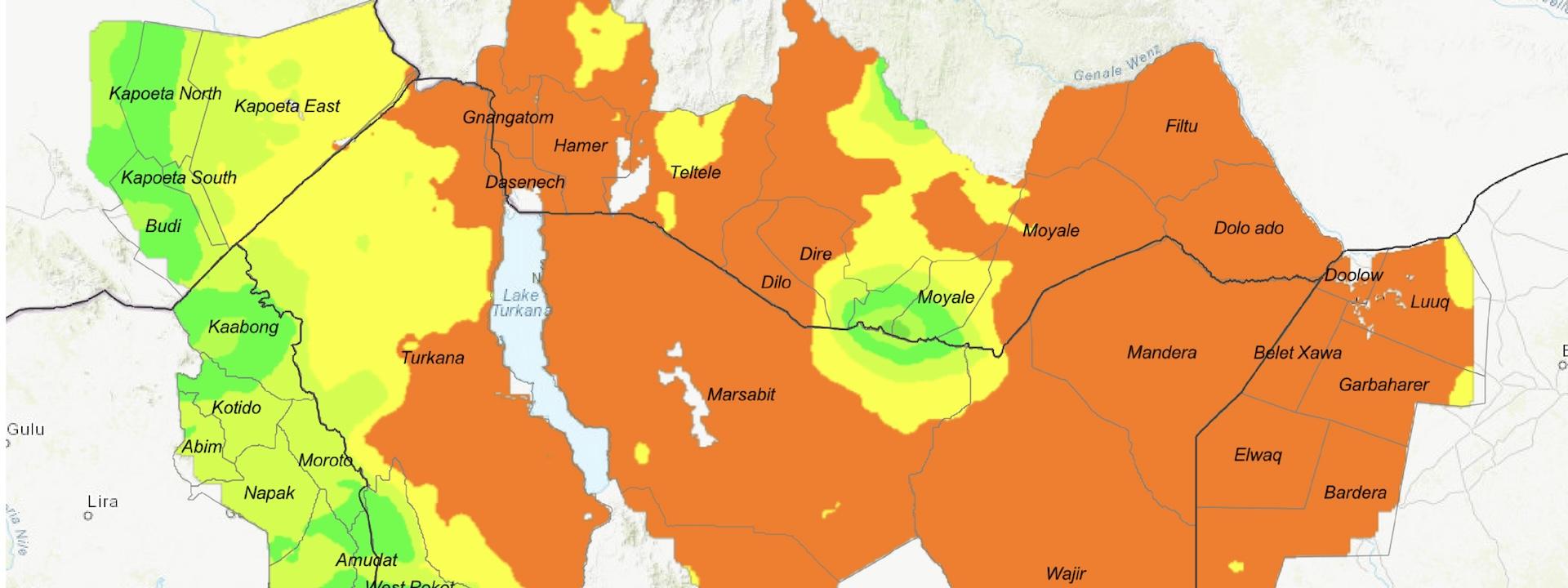The cross border forage prediction model is an important planning and decision support tool aimed at informing the livestock and other relevant sectors on the seasonal outlooks on forage condition. It is also intended to form the basis for tailored advisories for anticipatory action. It covers the Ethiopia, Kenya, Somalia, South Sudan and Uganda borderland areas.
Above-normal rainfall and higher-than-normal temperatures are predicted over most parts of the Greater Horn of Africa. Borderlands along Uganda, Kenya, South Sudan, Sudan, West and Eastern Ethiopia, Eritrea and Djibouti are predicted to experience increased rainfall providing a conducive environment for pasture regeneration while cross borderlands along Kenya, Somalia and Southern Ethiopia are expected to be dry an indication of stressed pasture.
Outlook
With the predicted wetter-than-normal conditions expected in the most cross-border areas along Uganda, Kenya, South Sudan, Sudan, West and Eastern Ethiopia, Eritrea and Djibouti. Warmer-than-normal temperatures over northern Sudan, central and western Ethiopia, Somalia and Kenya.
- Widespread regeneration and better pasture conditions are expected in most cross – border areas, especially along border areas of Kenya( Turkana West, Loima and West Pokot), Uganda (Kaabong, Kotido, Moroto, Amudat and Nakapiripirit districts), Ethiopia (some parts of Miyo and Moyale), South Sudan ( Budi, Kapoeta North and South) ; Relatively high >2.3 t/ha.
- However, cross-border areas of Ethiopia (Dilo, Dire, Teltele, some parts of Moyale, Dasenech, Dolo ado and Hamer), Kenya (Marsabit, Wajir and Mandera), Somalia (Doolow, Belet Xawa, Elwaq and Bardera) are expected to have poor forage conditions of <1.5 t/ha.
Perceived Impact
- Regeneration of pasture and availability of water in most cross-border areas.
- Increased livestock production including breeding and productivity.
- Favorable for fodder and forage production/conservation.
- Outbreak of water and vector borne diseases, Rift Valley fever (RVF), TADs.
- Reduced pastures in areas with below average rains leading to increased movement of livestock in search of pasture and water.
- Livestock deaths due to flash floods and landslides.
- High temperatures may lead to heat stress, hence reduced production and productivity.
- Potential for sporadic resource based conflicts; pastoralists, farmers, and wildlife.
- Heavy rains will affect timely access to markets.
Advisories
- Promote conservation of excess pasture and water.
- Enhance disease surveillance especially for TADS.
- Create community awareness about expected rains and riverine floods to invest in commercial fodder production, present animals for vaccination, water harvesting.
- Promote gender sensitive entrepreneurship in fodder, milk, meat processing and marketing.
- Countries should follow the ICPAC and Meteorological departments monthly updates of the forecasts.
- Activate the pre- and post- gender responsive migration peace committees to mitigate conflicts between pastoralists, farmers, and wildlife.
- Improve gender responsive access to early warning messages and build capacity of communities to understand, interpret and make use of the messages.
- Promote proper disposal of carcasses, vaccine, and antimicrobial empties for sustainable environmental conservation.

